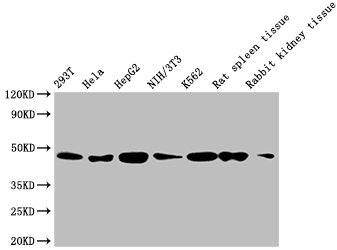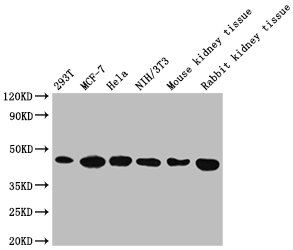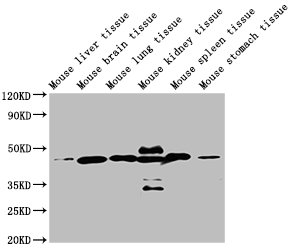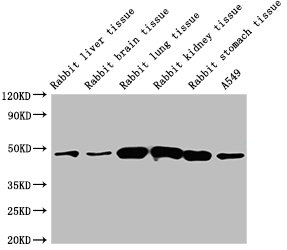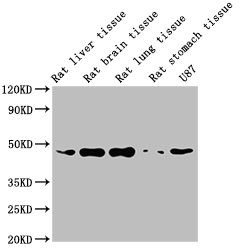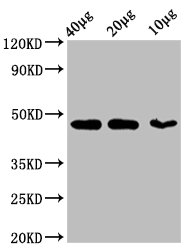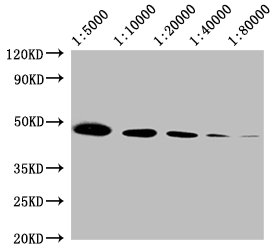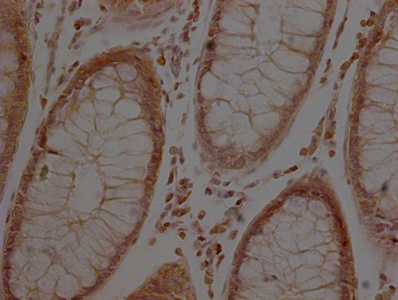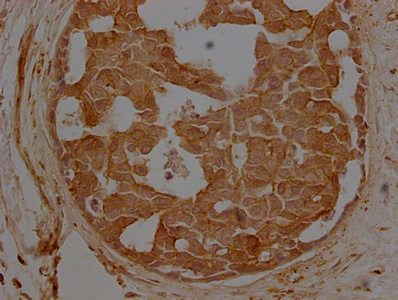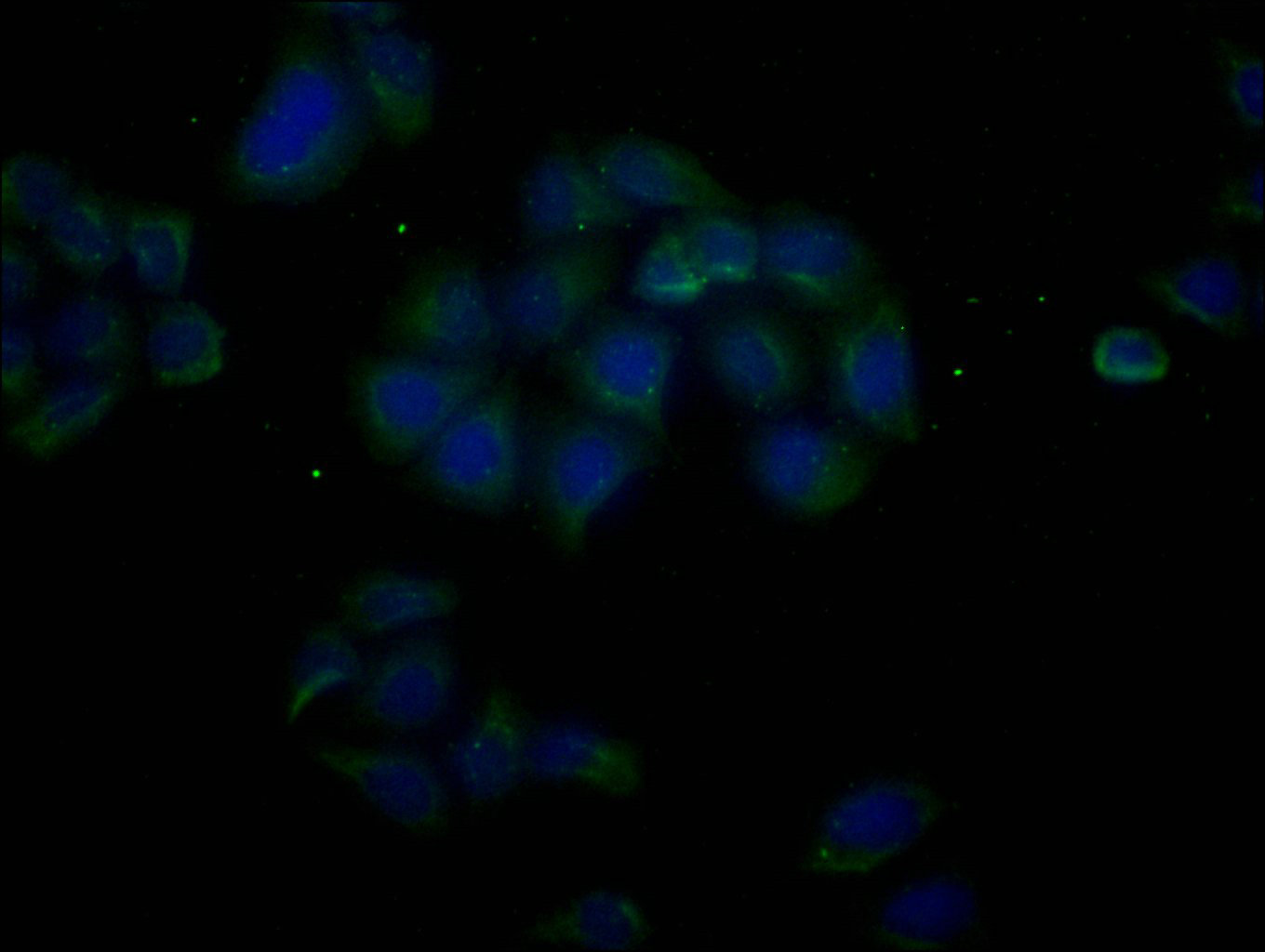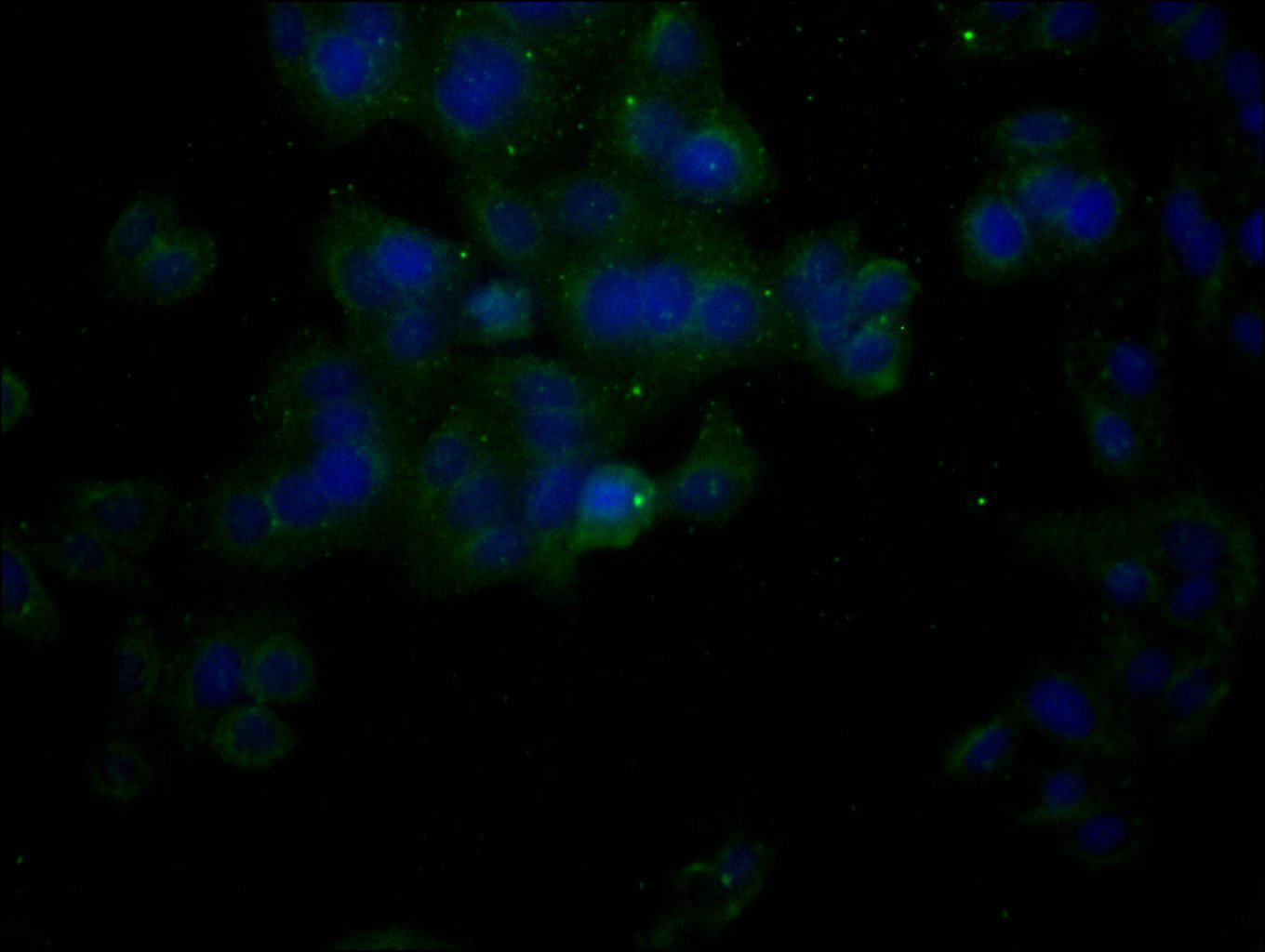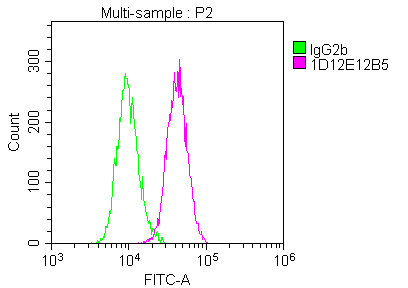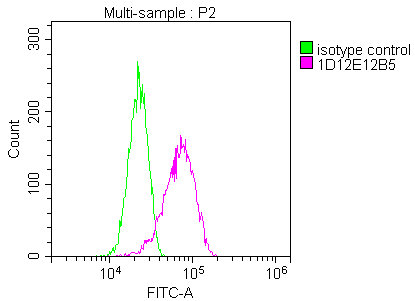-
Western Blot
Positive WB detected in: 293T whole cell lysate, Hela whole cell lysate, HepG2 whole cell lysate, NIH/3T3 whole cell lysate, K562 whole cell lysate, Rat spleen tissue, Rabbit kidney tissue
All lanes: ACTB antibody at 1:5000
Secondary
Goat polyclonal to mouse IgG at 1/50000 dilution
Predicted band size: 42 KDa
Observed band size: 42 KDa
Exposure time:5min
-
Western Blot
Positive WB detected in: 293T whole cell lysate, MCF-7 whole cell lysate, Hela whole cell lysate, NIH/3T3 whole cell lysate, Mouse kidney tissue, Rabbit kidney tissue
All lanes: ACTB antibody at 1:5000
Secondary
Goat polyclonal to mouse IgG at 1/50000 dilution
Predicted band size: 42 KDa
Observed band size: 42 KDa
Exposure time:5min
-
Western Blot
Positive WB detected in: Mouse liver tissue, Mouse brain tissue, Mouse lung tissue, Mouse kidney tissue, Mouse spleen tissue, Mouse stomach tissue
All lanes: ACTB antibody at 1:5000
Secondary
Goat polyclonal to mouse IgG at 1/50000 dilution
Predicted band size: 42 KDa
Observed band size: 42 KDa
Exposure time:5min
-
Western Blot
Positive WB detected in: Rabbit liver tissue, Rabbit brain tissue, Rabbit lung tissue, Rabbit kidney tissue, Rabbit stomach tissue, A549 whole cell lysate
All lanes: ACTB antibody at 1:5000
Secondary
Goat polyclonal to mouse IgG at 1/50000 dilution
Predicted band size: 42 KDa
Observed band size: 42 KDa
Exposure time:5min
-
Western Blot
Positive WB detected in: Rat liver tissue, Rat brain tissue, Rat lung tissue, Rat stomach tissue, U87 whole cell lysate
All lanes: ACTB antibody at 1:5000
Secondary
Goat polyclonal to mouse IgG at 1/50000 dilution
Predicted band size: 42 KDa
Observed band size: 42 KDa
Exposure time:5min
-
Western Blot
Positive WB detected in: 293T whole cell lysate at 40μg, 20μg, 10μg
All lanes:ACTB antibody at 1:5000
Secondary
Goat polyclonal to mouse IgG at 1/50000 dilution
Predicted band size: 42 KDa
Observed band size: 42 KDa
Exposure time:5min
-
Western Blot
Positive WB detected in: 20μg 293T whole cell lysate
ACTB antibody at 1:5000, 1:10000, 1:20000, 1:40000, 1:80000
Secondary
Goat polyclonal to mouse IgG at 1/50000 dilution
Predicted band size: 42 KDa
Observed band size: 42 KDa
Exposure time:5min
-
IHC image of CSB-MA000091M1m diluted at 1:500 and staining in paraffin-embedded colon cancer performed on a Leica BondTM system. After dewaxing and hydration, antigen retrieval was mediated by high pressure in a citrate buffer (pH 6.0). Section was blocked with 10% normal goat serum 30min at 37℃ Then primary antibody (1% BSA) was incubated at 4°C overnight. The primary is detected by a Goat anti-Mouse IgG labeled by HRP and visualized using 0.05% DAB.
-
IHC image of CSB-MA000091M1m diluted at 1:500 and staining in paraffin-embedded breast cancer performed on a Leica BondTM system. After dewaxing and hydration, antigen retrieval was mediated by high pressure in a citrate buffer (pH 6.0). Section was blocked with 10% normal goat serum 30min at 37℃ Then primary antibody (1% BSA) was incubated at 4°C overnight. The primary is detected by a Goat anti-Mouse IgG labeled by HRP and visualized using 0.05% DAB.
-
Immunofluorescence staining of Hela cells with CSB-MA000091M1m at 1:100, counter-stained with DAPI. The cells were fixed in 4% formaldehyde, permeated by 0.2% TritonX-100, and blocked in 10% normal Goat Serum. The cells were then incubated with the antibody overnight at 4°C. Nuclear DNA was labeled in blue with DAPI. The secondary antibody was FITC-conjugated AffiniPure Goat Anti-Mouse IgG (H+L).
-
Immunofluorescence staining of HepG2 cells with CSB-MA000091M1m at 1:100, counter-stained with DAPI. The cells were fixed in 4% formaldehyde, permeated by 0.2% TritonX-100, and blocked in 10% normal Goat Serum. The cells were then incubated with the antibody overnight at 4°C. Nuclear DNA was labeled in blue with DAPI. The secondary antibody was FITC-conjugated AffiniPure Goat Anti-Mouse IgG (H+L).
-
Overlay Peak curve showing Hela cells stained with CSB-MA000091M1m (red line) at 1:200. The cells were fixed in 4% formaldehyde and permeated by 0.2% TritonX-100. Then 10% normal goat serum was Incubated to block non-specific protein-protein interactions followed by the antibody (1µg/1*106cells) for 1 h at 4°C. The secondary antibody used was FITC-conjugated Goat Anti-Mouse IgG(H+L) at 1/100 dilution for 30min at 4°C. Isotype control antibody (green line) was mouse IgG2b (1µg/1*106cells) used under the same conditions. Acquisition of >10,000 events was performed.
-
Overlay Peak curve showing HepG2 cells stained with CSB-MA000091M1m (red line) at 1:200. The cells were fixed in 4% formaldehyde and permeated by 0.2% TritonX-100. Then 10% normal goat serum was Incubated to block non-specific protein-protein interactions followed by the antibody (1µg/1*106cells) for 1 h at 4°C. The secondary antibody used was FITC-conjugated Goat Anti-Mouse IgG(H+L) at 1/100 dilution for 30min at 4°C. Isotype control antibody (green line) was mouse IgG2b (1µg/1*106cells) used under the same conditions. Acquisition of >10,000 events was performed.

